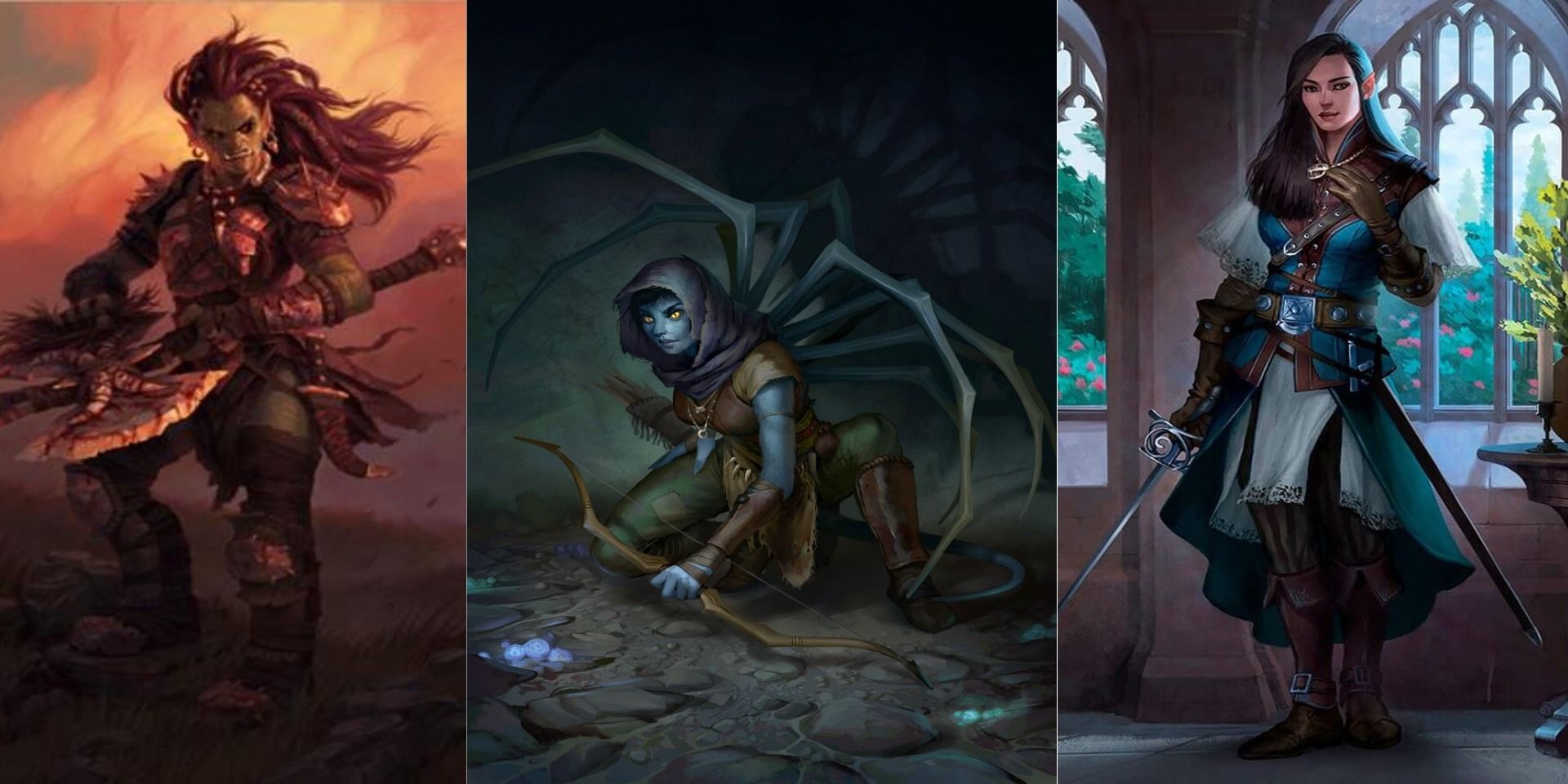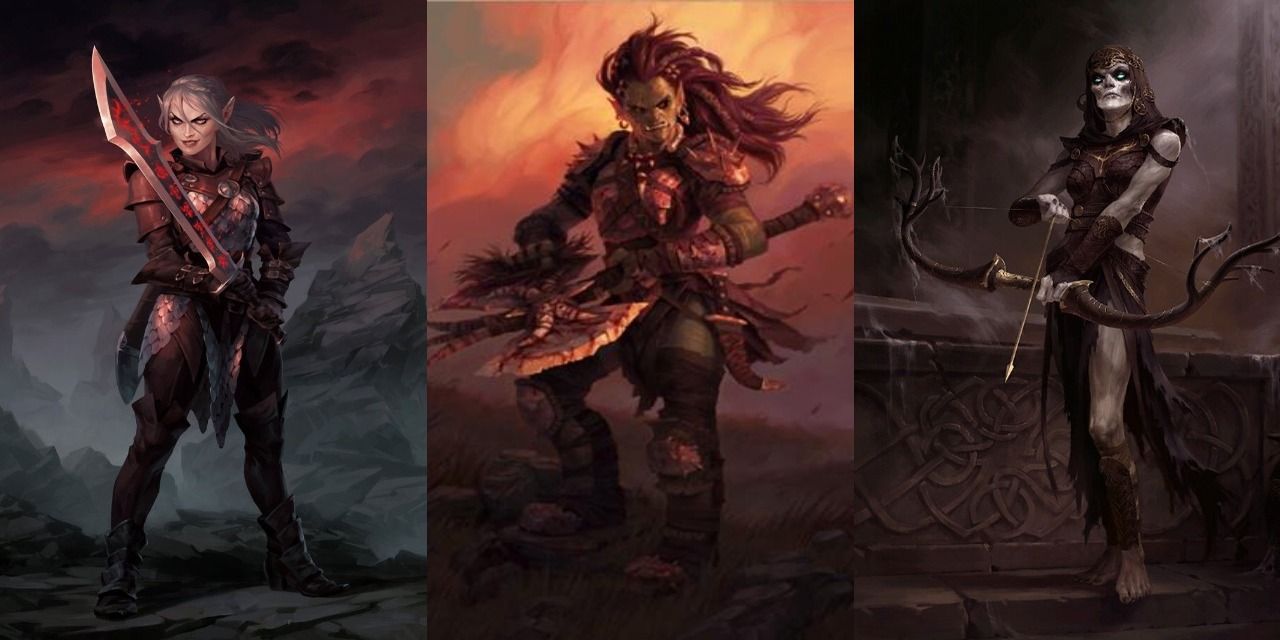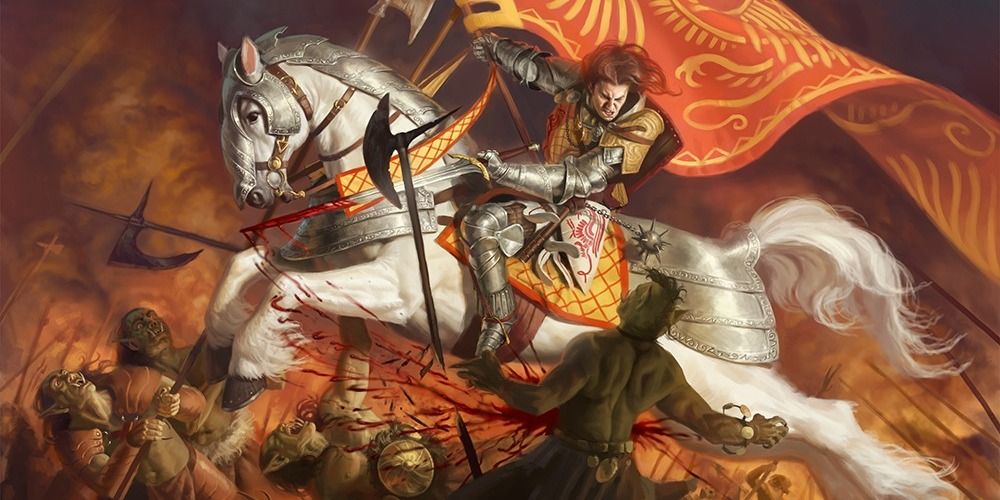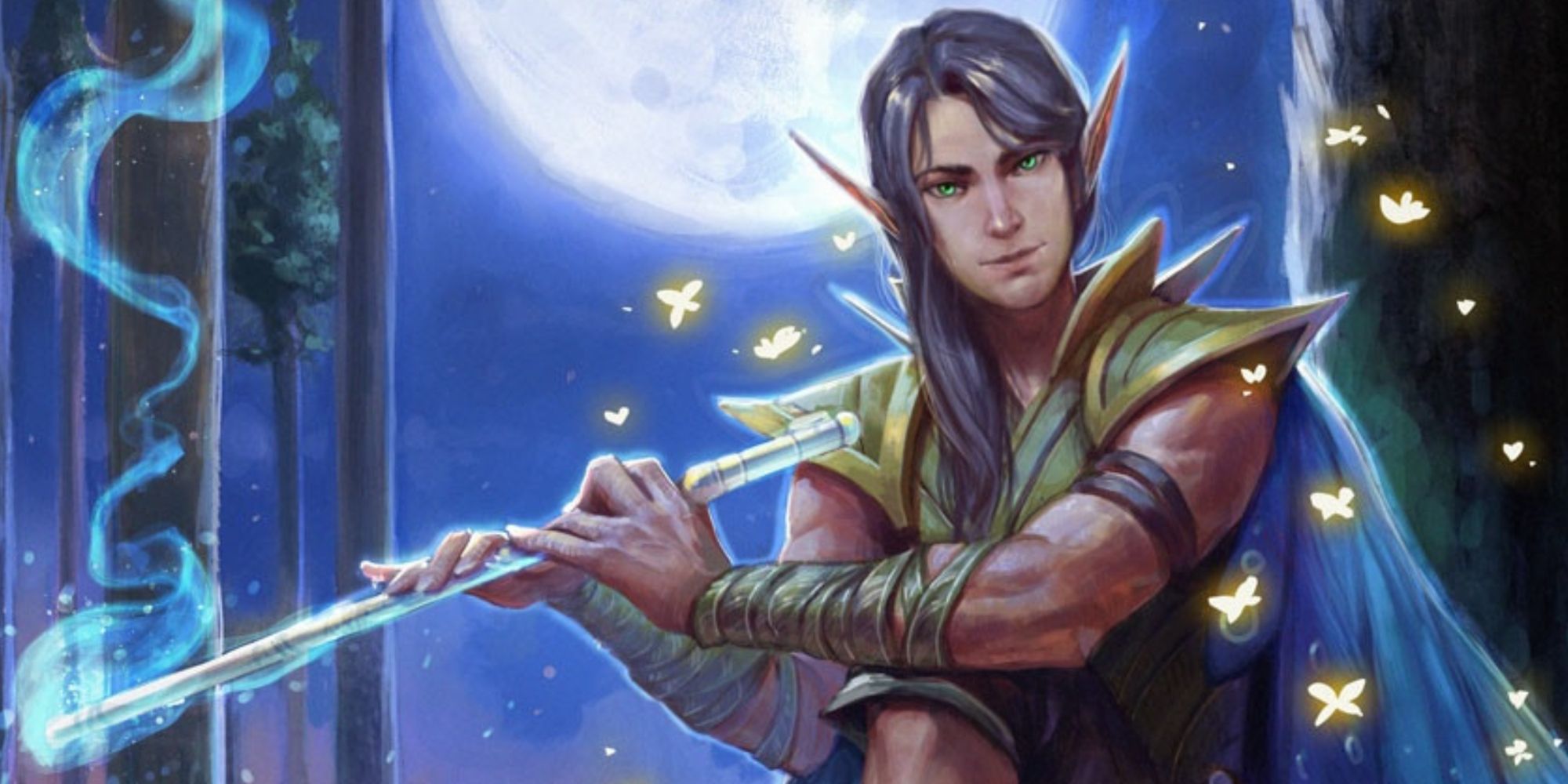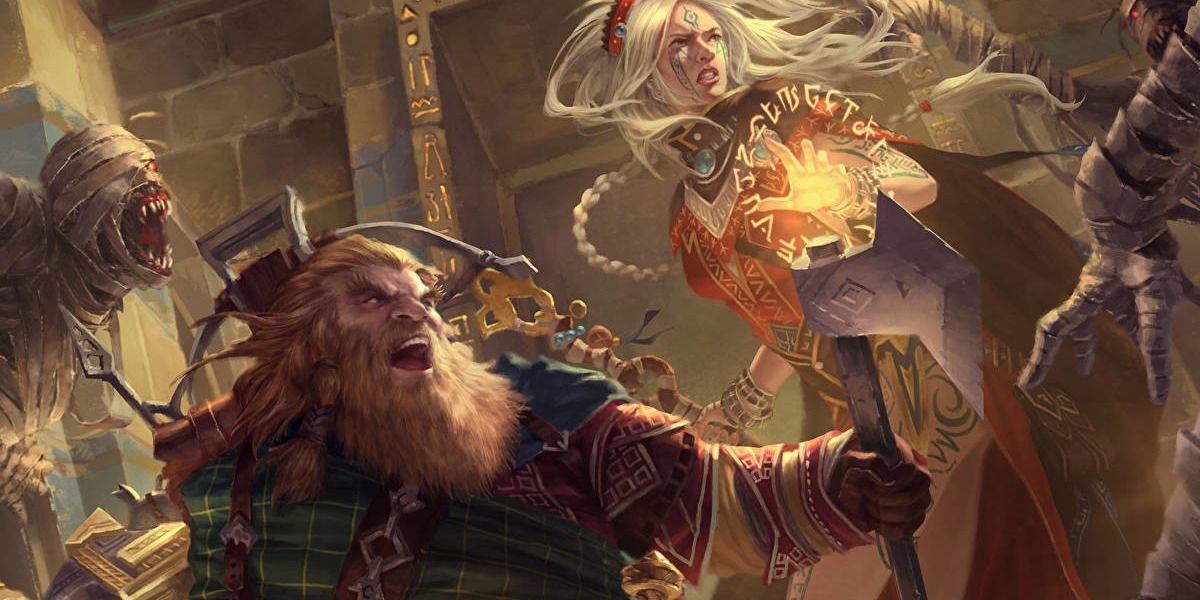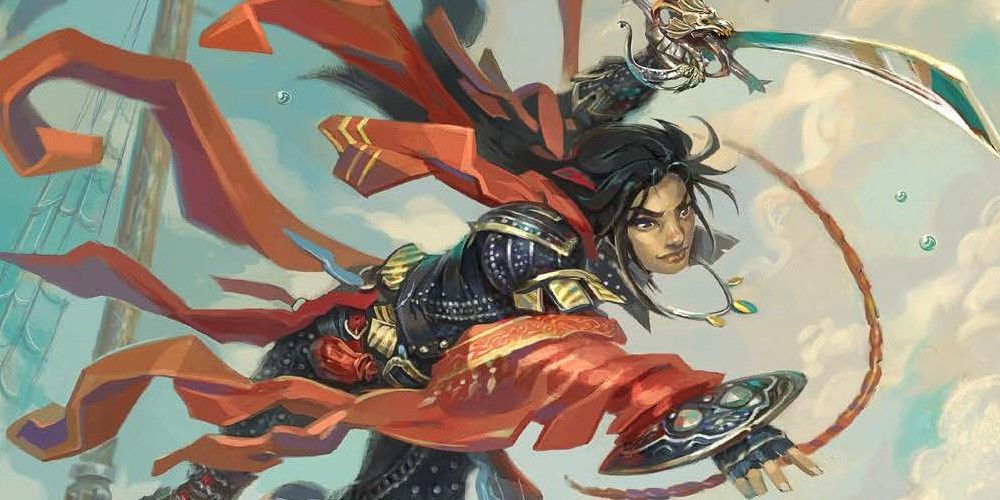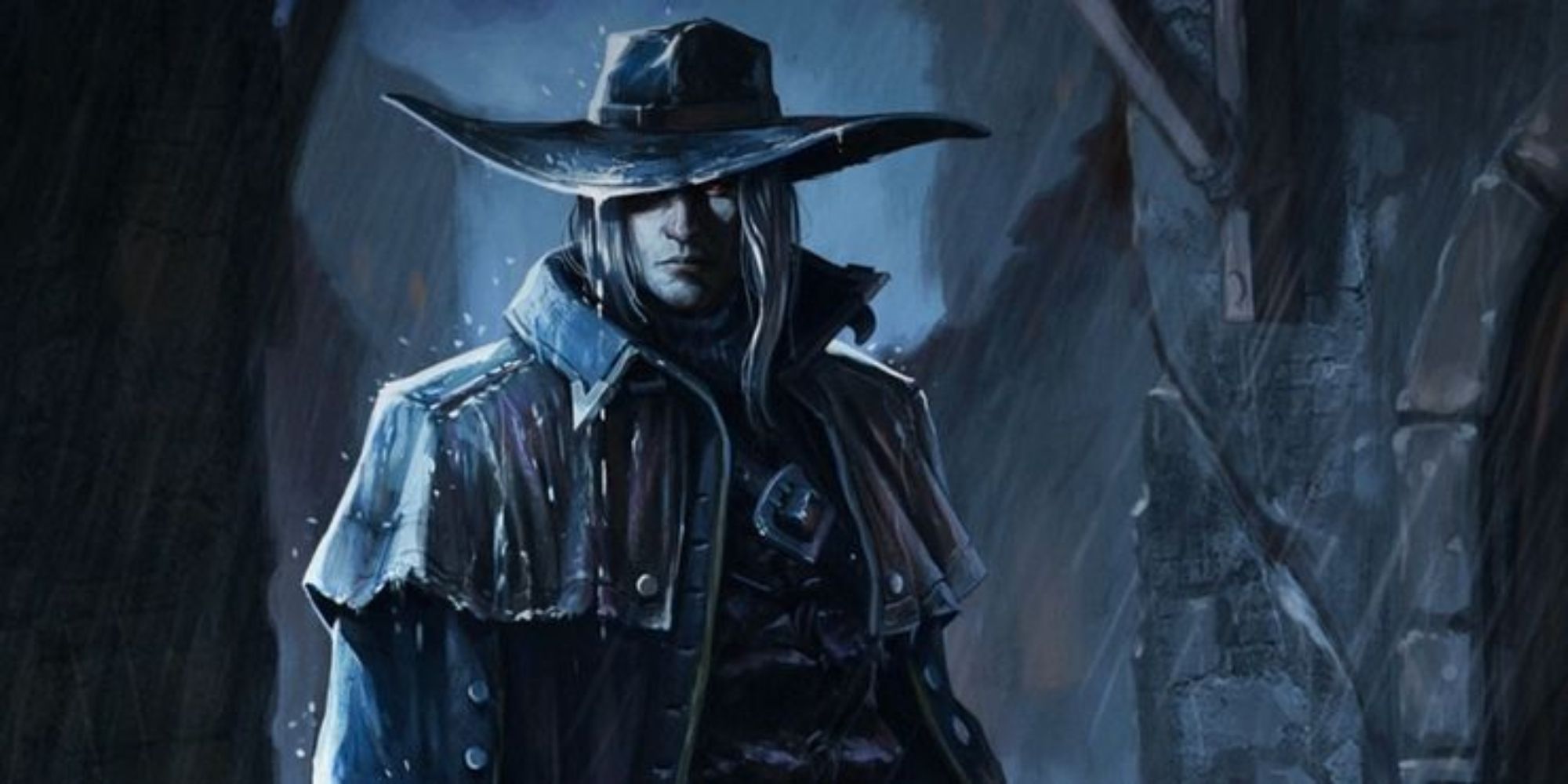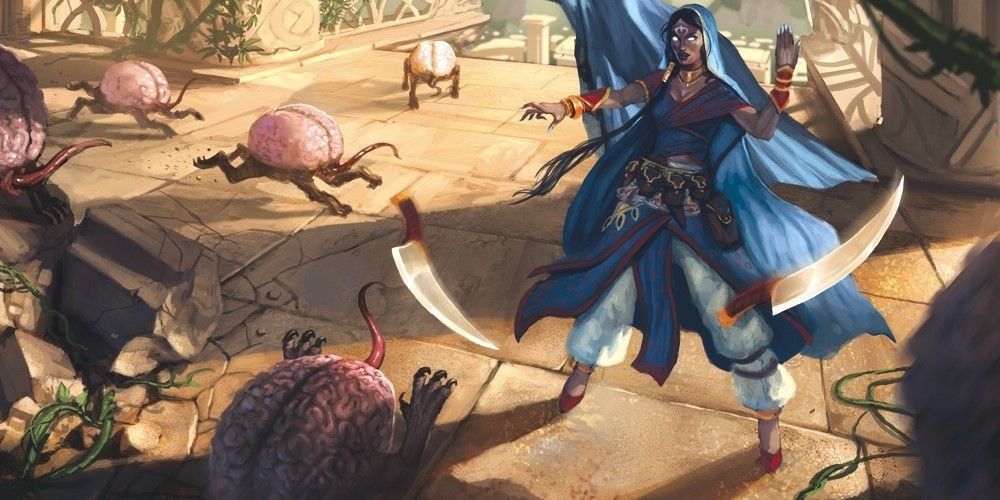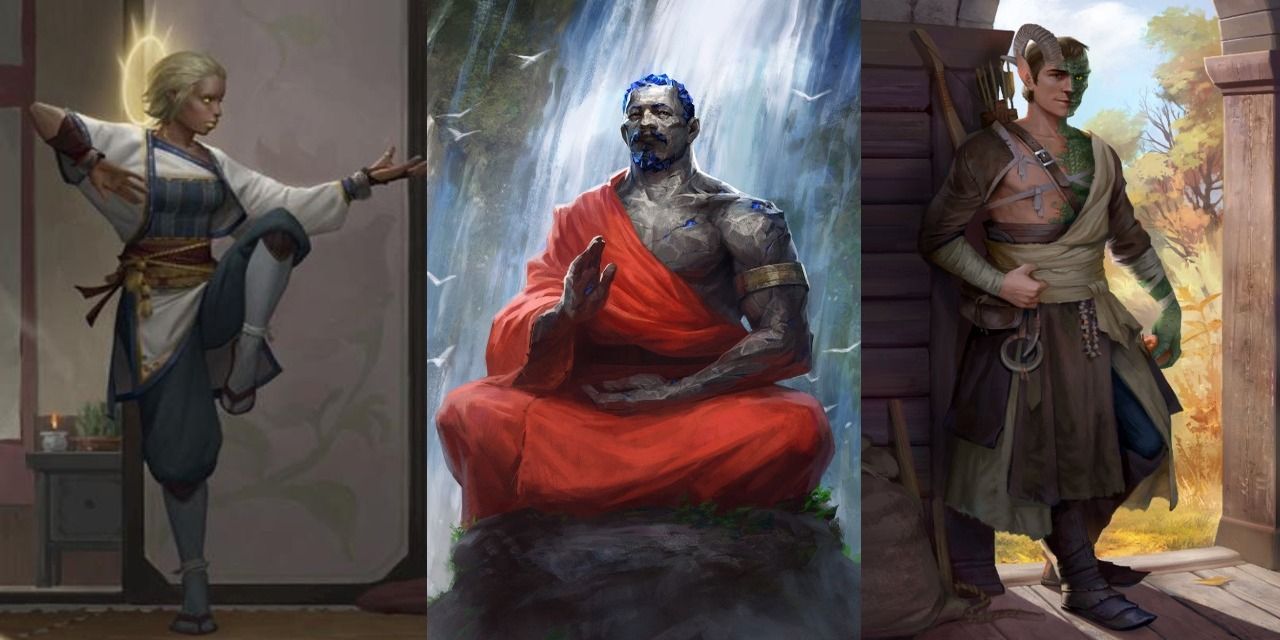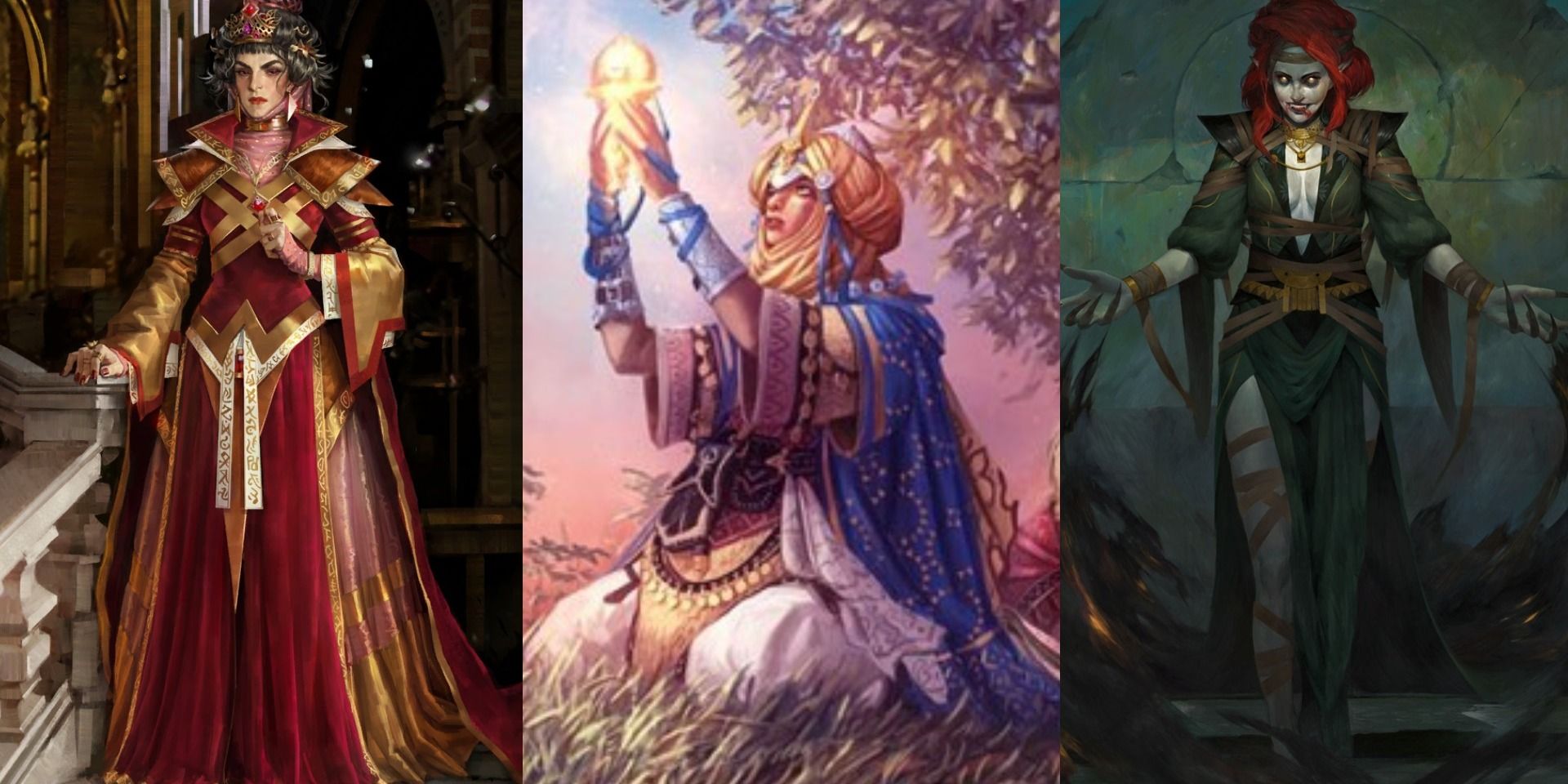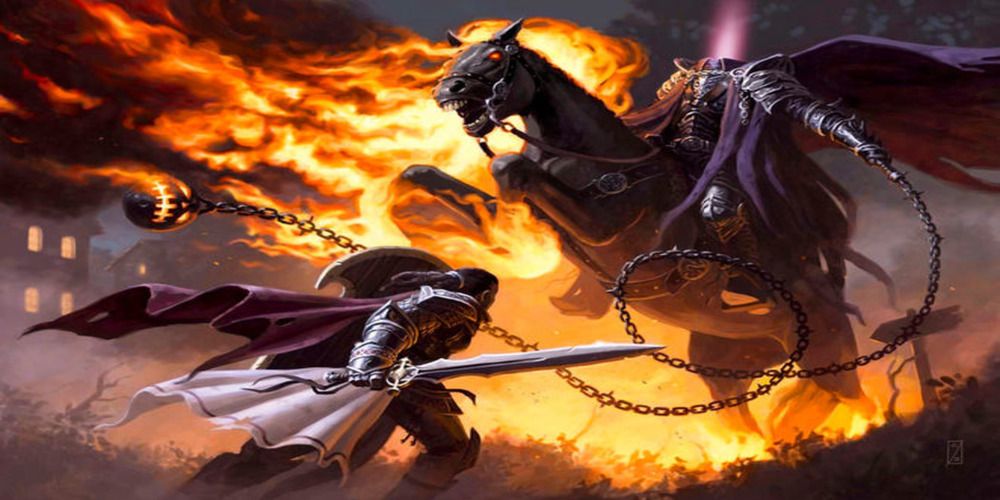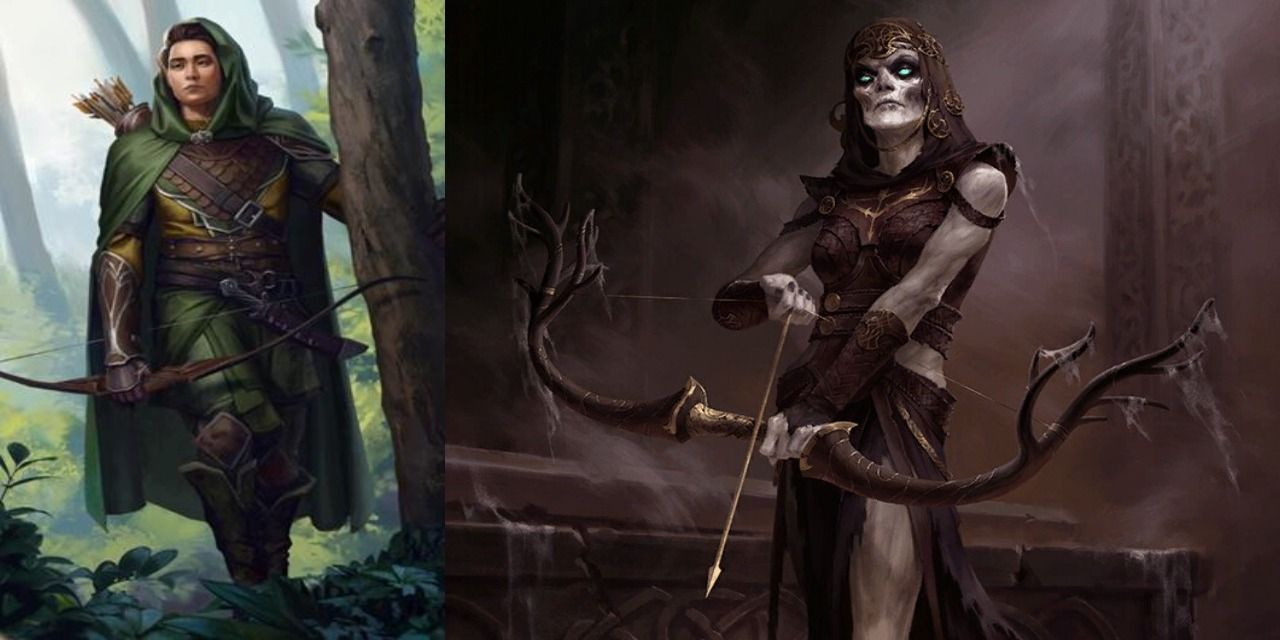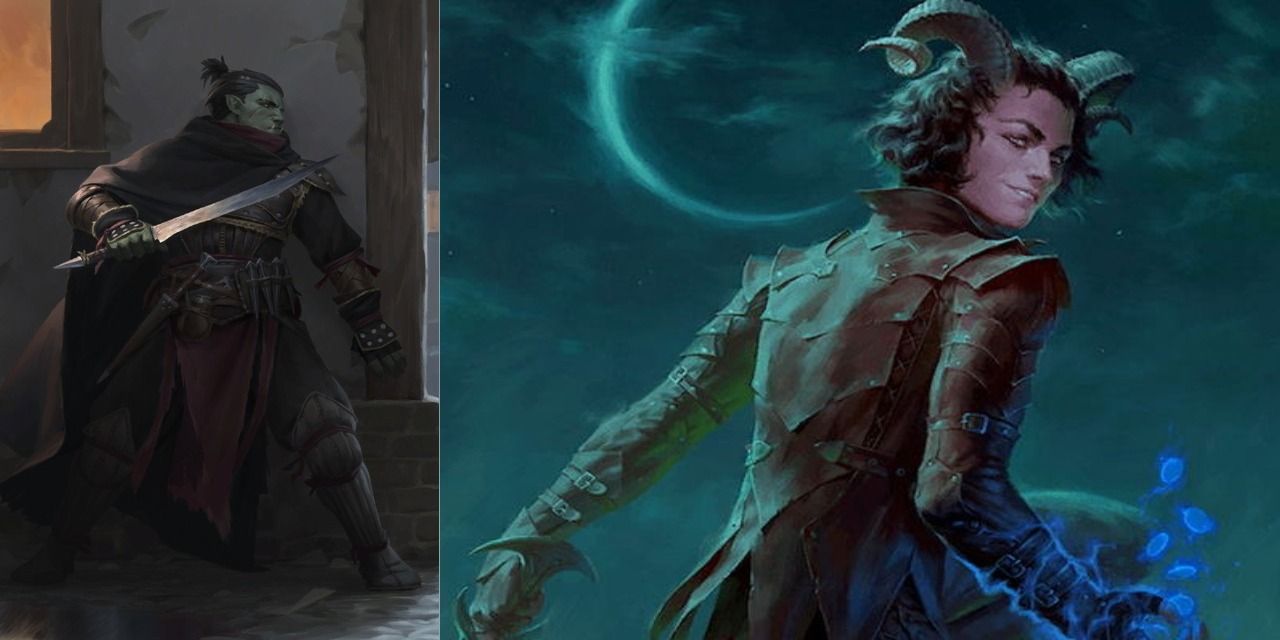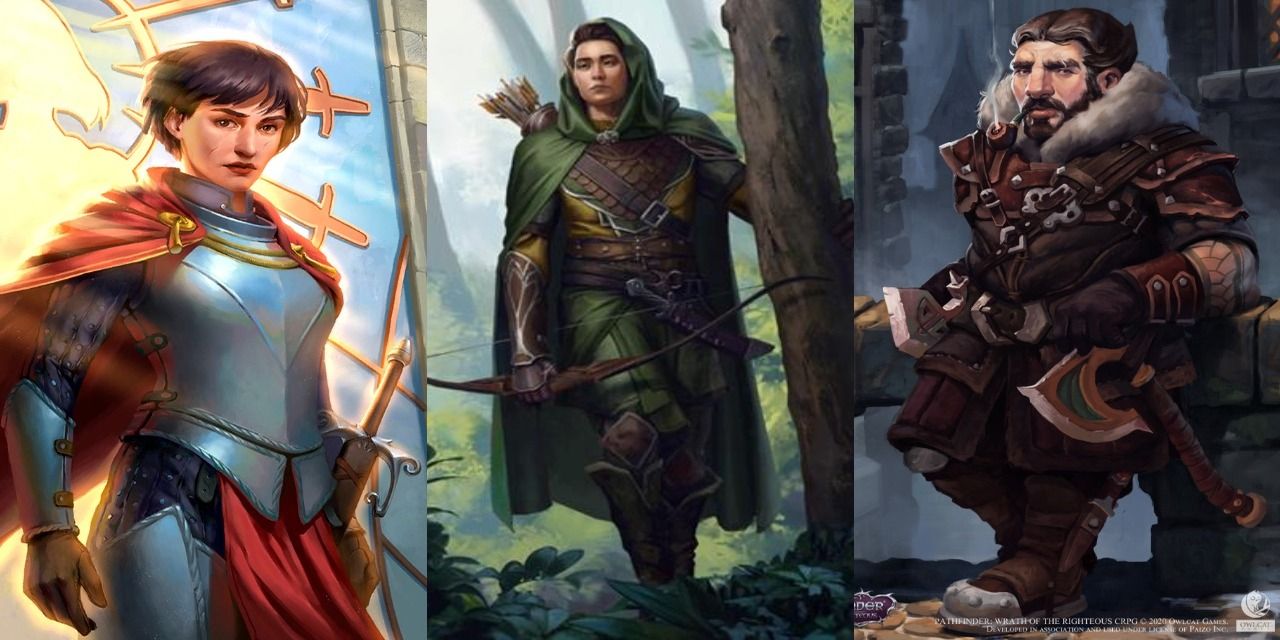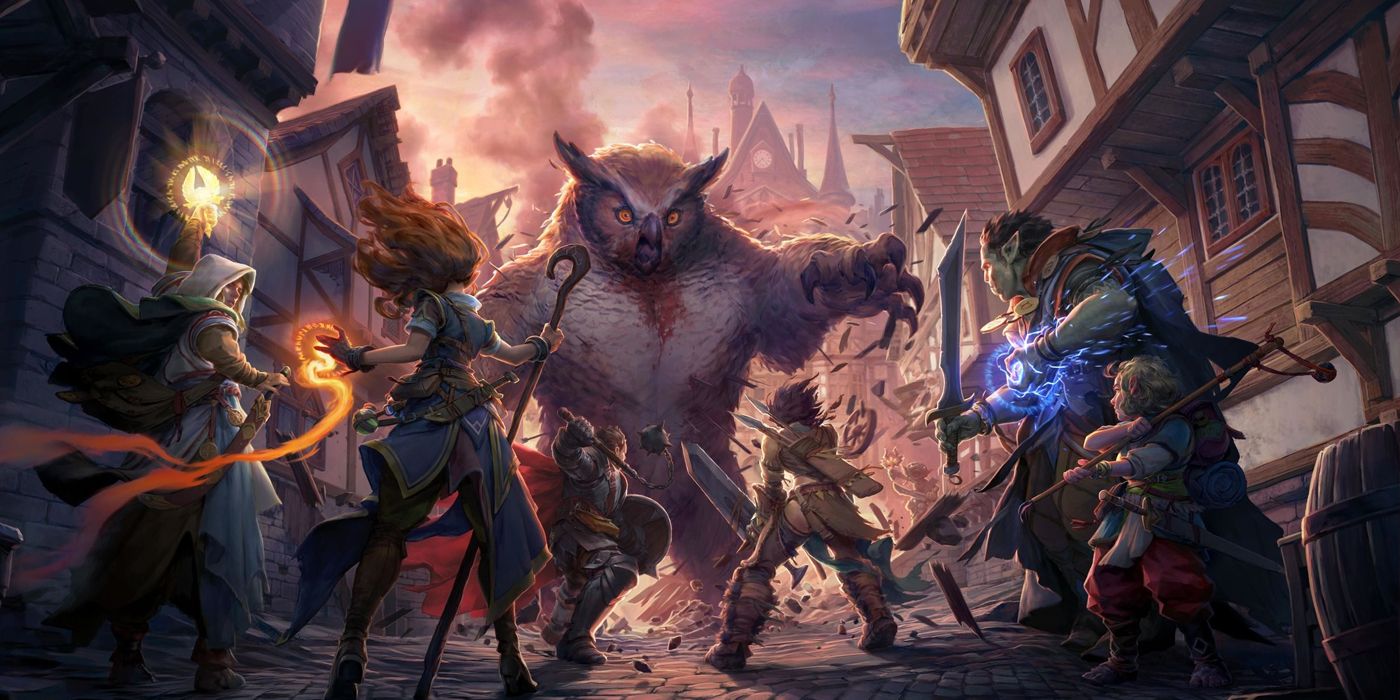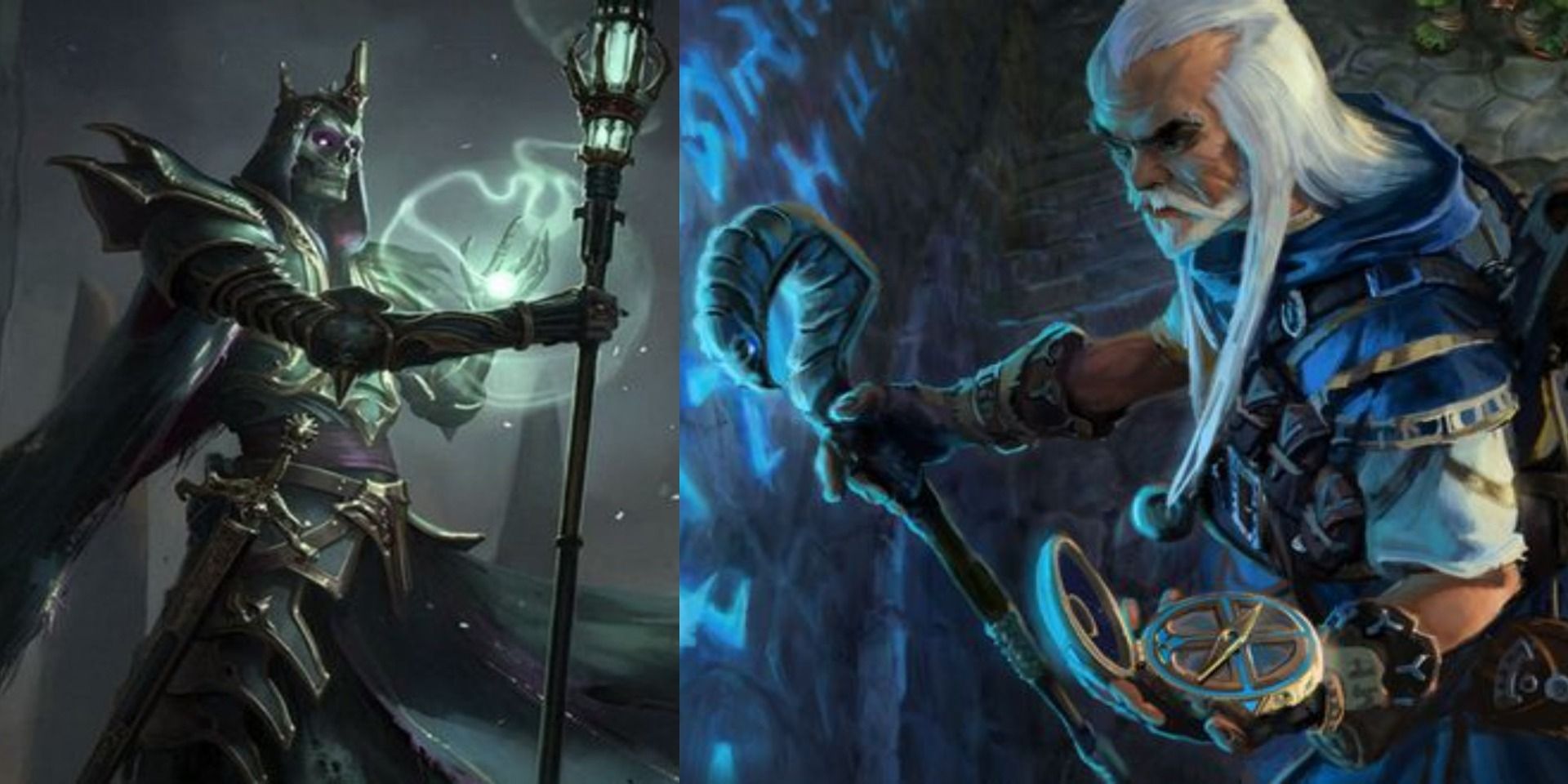Fans of isometric, stand-alone, turn-based fantasy video games have been suffering a bit of a dry spell. Most developers had gone the way of MMOs or three-dimensional, first-person POVs partly to cash in on the popularity. The folks at Owlcat Games, however, saw things a bit differently when they made Pathfinder: Wrath of the Righteous. They not only kept the old-school camera angle, but also used the intriguing world of the Pathfinder universe as the framework for their turn-based adventure games.
Games from the Baldur's Gate franchise are based on the rules that govern Dungeons & Dragons. Although both D&D and Pathfinder have some features in common, there are profound differences. One that's easy to see right away is that Pathfinder has a lot more variety when it comes to classes, with 25 to choose from. That doesn't include advanced Prestige classes or multi-class creations either.
For those who are new to Pathfinder, or just want to play a low-maintenance character while enjoying the story, there are several that are ideal for beginners. When playing the game, the character creation screen helps players by indicating which classes require more micromanagement than others. There are also classes for advanced characters that have already attained at least 3rd level, so players can return to it after they have more experience with the game.
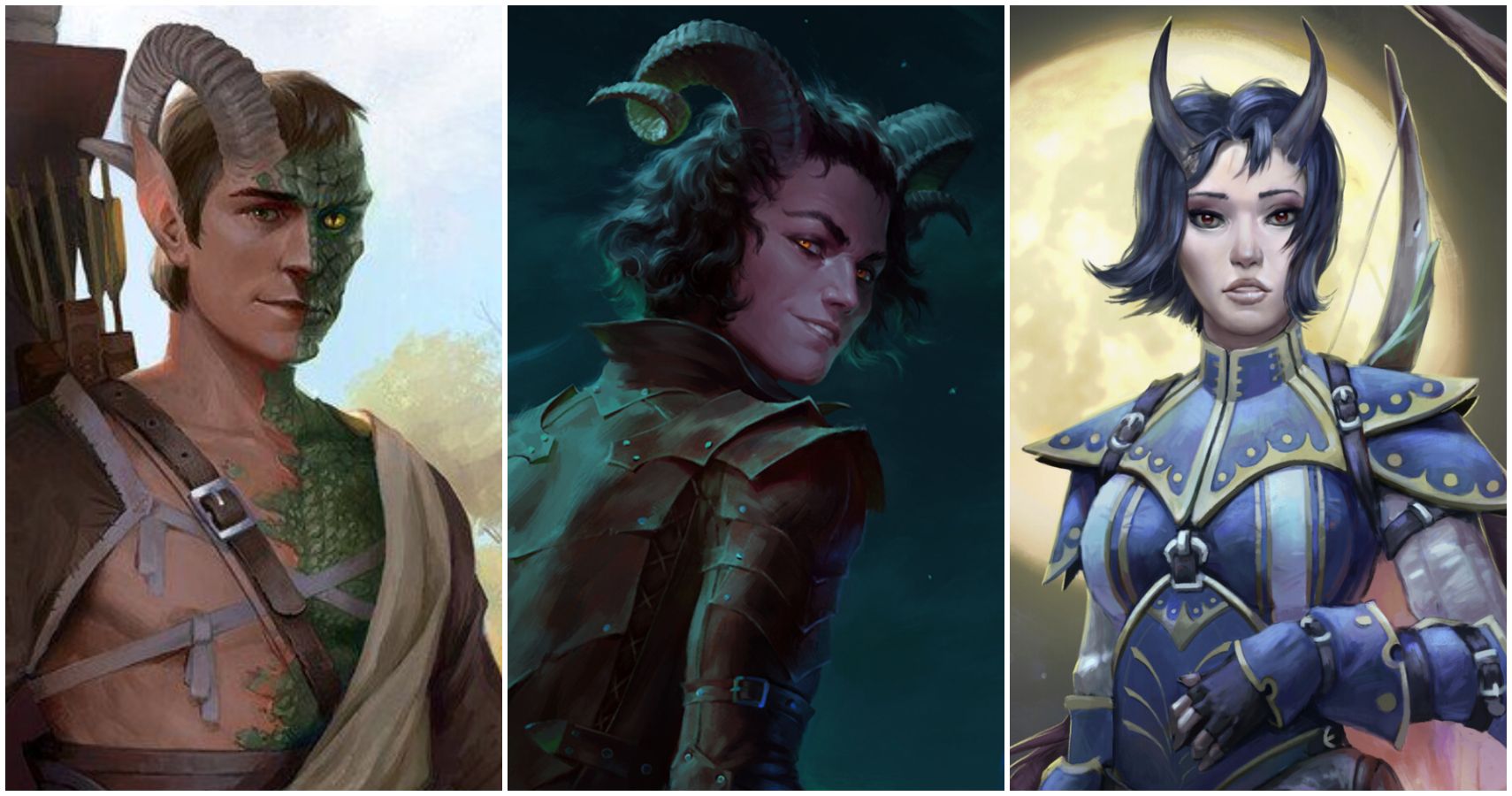
Pathfinder: Wrath Of The Righteous – Best Companions, Ranked
Companions are a major part of the Pathfinder: Wrath Of The Righteous experience. However, not all of them are made equal.Updated October 12, 2023, by Kristy Ambrose: It's been a while, and Pathfinder: Wrath of the Righteous has gone through some changes. These include several updates and bug fixes, major patches and DLCs, and versions for the PS4 and Xbox consoles. The customization process for each class has a level of detail related to both the main story, and whatever Mythic path or compelling backstory the individual player decides to craft. There's also the option of the automatic recommended build if beginners need a head start. However, there are still some ideal choices for those who prefer a custom build.
15 Barbarian
- Party Role: Melee damage, with some possibility for a Defender role.
- Difficulty Level: Rated 1/5, one of the easiest and best classes for a beginner.
- Archetype Choices: There are six Archetype choices, some of which also offer better AC options for aspiring defenders and other features like animal companions.
Simple is as simple does when it comes to Pathfinder: Wrath of the Righteous classes. A melee class with a limited choice when it comes to armor and certain intellectual pursuits, Barbarian is one of the best classes to start any RPG.
Players can customize their Barbarian to have skills with both distance and melee weapons, much like any martial class. Although they might be able to learn a cantrip or two depending on the exact build they, can't cast spells or use most scrolls. Players interested in a straightforward hack-and-slash experience would enjoy playing a Barbarian.
14 Cavalier
- Party Role: Equally effective as a melee or ranged DPS or as a Defender.
- Difficulty Level: Rated 2/5, partly due to the extra mechanics of an animal companion.
- Number of Archetype Choices: There are seven, but the Cavalier of the Paw is restricted to Halflings.
It sounds like the name for a swashbuckling-type class, and it is when it comes to weapons and gear, but players also get to choose an animal companion. Naturally, this is often a horse, or another ridable animal. Previously, some possibilities weren't visible to the Cavaliers, but that was fixed in a patch.
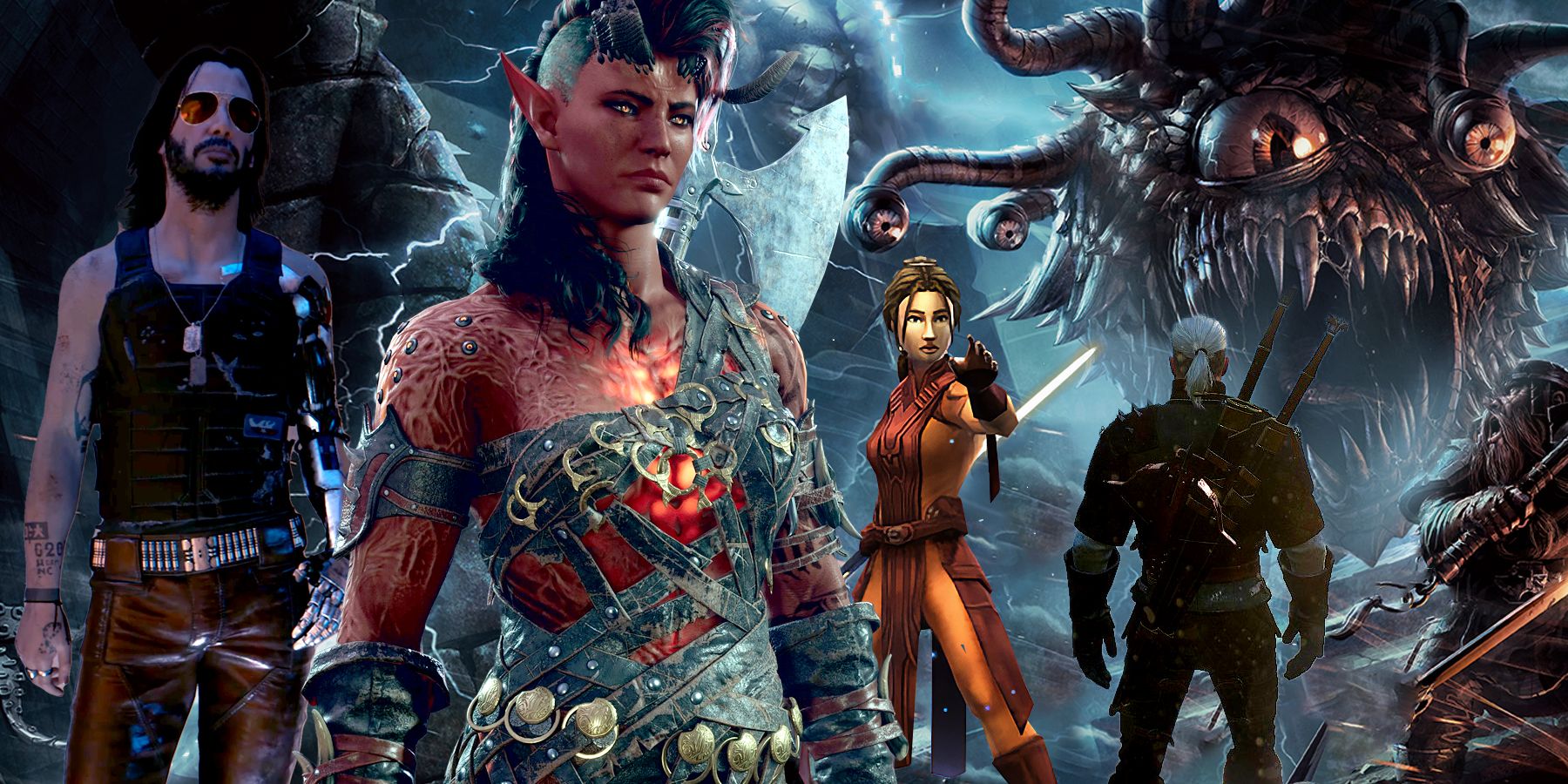
Video Games To Play If You Love Dungeons & Dragons
Dungeons & Dragons inspired countless CRPGs over the years, but which games should a fan of the Tabletop franchise try?
The Cavalier can be seen charging into battle waving their standard, so this is an ideal starter class for those planning to lead the party. When it comes to mobility, this is one of Pathfinder: Wrath of the Righteous' best classes. Characters also get a variety of martial skills, including both weapons and armor along with extra perks like Tactician as a bonus Feat.
13 Bard
- Party Role: Can take on a healing role but has some serious DPS abilities, including melee or ranged fighting.
- Difficulty Level: Rated 3/5 because of the variety of roles this class can take, making it both complex and simple.
- Number of Archetype Choices: A total of six with vastly different abilities.
Bards have surged in popularity among RPG gamers thanks to their wide variety of abilities. Players can make this class more complicated if they build them to fill more than one party role, but a beginner can always keep it simple as a fighting or casting class.
The subclasses include Bards that are more like Rangers, Druids, or even Sorcerers, which is contrary to the reputation of Bards as strictly healers or support classes. No matter the choice, all Bards still have access to the same handy abilities, like Bardic Knowledge and Detect Magic.
12 Cleric
- Party Role: Often a healer, but can also be a defender or DPS, including melee or ranged.
- Difficulty Level: Rated 3/5 because of the sheer number of possibilities when it comes to a Cleric build, even a simple one.
- Number of Archetype Choices: Choose between six different Archetypes, some of which require certain moral alignments. Clerics cannot be Atheists.
One of the most versatile classes in Pathfinder: Wrath of the Righteous, a Cleric can fill virtually every party role and has some of the most useful spells at hand. Healing incantations are only the tip of that iceberg. Clerics can also cast Restoration spells, protection from energy and alignment spells, and channel Negative and Positive Energy.
The foundation for a Cleric build starts with choosing a moral alignment and a deity, which often determines whether this Cleric will be a healer or a ranged DPS. One Archetype allows for equal powers in each, but it also requires a neutral alignment.
11 Fighter
- Party Role: Defense or melee damage with little variation.
- Difficulty Level: One of the easiest classes to play with a 1/5 rating.
- Number of Archetype Choices: Six choices are offered which include options for either defenders or damage dealers.
When Gary Gygax first started what would become modern D&D, he included three classes, and this was one of them. The legacy class that appears in every RPG, the Fighter can be as simple or as complex as the player wants.
Fighters are highly customizable. Players can choose between Archetypes, abilities for both combat and survival, and other useful features. Beginners who want to play a martial class but are unsure about their character's specific progression would do well to choose a Fighter, because they learn a new skill at every level. Their primary abilities are Dexterity or Strength. They can take on the party's defense with a sword and shield, or dual-wield and act as melee or ranged DPS.
10 Inquisitor
- Party Role: Ranged or melee damage, with some spellcasting support.
- Difficulty Level: Rated 3/5 due to the management of their divine spells to heal, harm, or protect.
- Number of Archetype Choices: There are six, but like Clerics, an Inquisitor cannot be an Atheist.
The Inquisitor can be compared to a Paladin when it comes to faith and melee damage, but the similarities stop there. Inquisitors are dedicated to their deity, which means they aren't tied to a Lawful Good alignment. They are fanatics, often working to pursue those who oppose their god. They can use torture, murder, and pet monsters to do it.
The fairly simple RP background is a good start for new players. What makes this class one of the easier ones to play is the focus on damage, whether it's ranged or melee, plus the choice of a few simple spells that can be used for healing the party or harming its enemies.
9 Sorcerer
- Party Role: Ranged DPS, with little or no variation.
- Difficulty Level: Rated 3/5, an easier spellcasting class with intuitive abilities.
- Number of Archetype Choices: There are seven, but some are restricted based on race and subclass.
If any class has a reputation for being overpowered, it's always the Sorcerer. That's a nice incentive for players of any experience level, but the Sorcerer is easier to play overall because they know spells by instinct as opposed to study and memorization.
This feature makes them easier to manage and organize compared to other spellcasting classes. What exactly they can do is connected to their Bloodline and their choice of subclass, which offers some interesting possibilities for both roleplay and combat.
8 Monk
- Party Role: Ranged or melee DPS, with some support to the defender or healer.
- Difficulty Level: Rated 2/5, an easier class that requires some versatility when it comes to roles and weapons.
- Number of Archetype Choices: Seven, which all require a Lawful moral alignment. The Student of Stone option is only available to Oreads.
Players shouldn't worry about fretting over weapon and armor choices with this class. They'll have very few, but that's the advantage. New players will also appreciate a nice mix of abilities related to both athletics and perceptive skills.
The Monk class of Pathfinder: Wrath of the Righteous has more options when it comes to weapons than its counterparts in other games. They can access handaxes, shurikens, daggers, and several others. It's slightly limited when it comes to alignment choices, but there are RP choices related to the Monk's deity or background to make it more interesting.
7 Oracle
- Party Role: Healer or DPS, depending on moral alignment and choice of deity.
- Difficulty Level: Rated 3/5 just for the sheer amount an Oracle can do within even one or two-party roles.
- Number of Archetype Choices: There are seven, one of which is only available to Aasimar, the Purifier.
The Oracle is often compared to a Cleric in the Pathfinder universe when it comes to the capacity for healing. Unlike the Cleric, however, the Oracle is more focused on their magical abilities. They don't have to be beneficial ones, and Oracles can be Atheists.
During the character creation process, Oracles have to choose from Cure Spells and Inflict Spells. A player could build a damage dealer that uses Negative Energy on enemies whole using their smaller library of healing spells for party support.
The Oracle class is fairly complex when it comes to mechanics and RP. Some players might not like the amount of work when it comes to creating a character with a unique build, but others will appreciate the detail. Oracles not only choose a Background like other characters, but also an inherent Curse, an Ancestral Mystery, and a Revelation, which is an extra ability related to their previous choices for spells.
6 Paladin
- Party Role: Often in the main defender role, they can also take on peripheral healing, support, and damage.
- Difficulty Level: Rated 2/5, making it one of the easiest spellcasting classes to manage.
- Number of Archetype Choices: Seven, all of which need a Lawful Good moral alignment. The Stonelord option is only available to Dwarves.
Paladins can wear plate armor, and heal themselves. What can go wrong? Plenty, because they're a Lawful moral alignment, and are on a mission from god. It's a good thing this character is one of Pathfinder: Wrath of the Righteous' best classes.
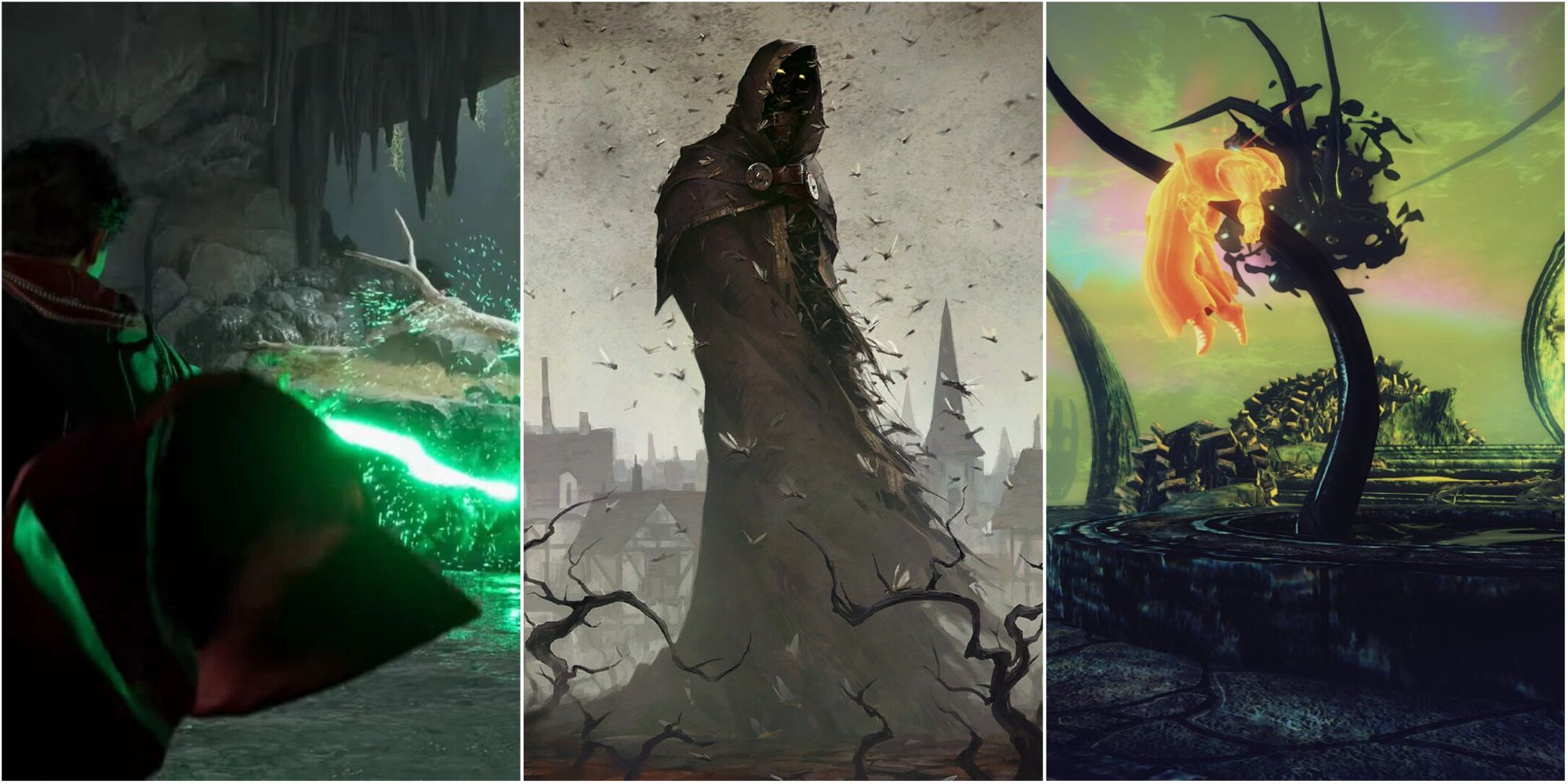
8 Magic Abilities That Only A Villain Would Use
No Goody Two-Shoes hero would be caught dead casting these dark spells.This class can surprise beginners because it isn't as easy as it sounds, but that's exactly why it's a good class for those new to Pathfinder or to RPGs in general. Paladins also have access to holy magic, which is particularly handy in Pathfinder: Wrath of the Righteous, in which many of the enemies are demons.
5 Ranger
- Party Role: DPS, either ranged or melee but are often associated with bows.
- Difficulty Level: 2/5, because of the straightforward role as a damage dealer and specialization when it comes to certain enemies and terrain, which keeps the gameplay simple.
- Number of Archetype Choices: Six, a few of which include unique magical powers and abilities along with animal companions.
This is not a wanderer of the woodland as it is in other games, although players could build a Ranger that way in Pathfinder if they wanted to. Beginners will like this class if they want to play a versatile role with some unique customization options at later levels.
The Ranger class in Pathfinder chooses a favored enemy and can access several Archetypes. Some of these include abilities often reserved for other classes, like spellcasting and espionage, but the Ranger has access to them as well.
4 Rogue
- Party Role: DPS, either ranged or melee, often uses some spellcasting power as well.
- Difficulty Level: 1/5, one of the easiest DPS classes that exist and are highly customizable.
- Number of Archetype Choices: Seven choices, with Master of All only available to Half-Elves.
Rogues can be simple or complicated depending on how one wants to play them, and are often compared to Fighters in this regard. This class learns new skill or ability at every level, so it's a good choice for beginners who like to track their progression and build their character step by step.

10 Best Female Rogue Characters In Gaming, Ranked
Rogues are a staple of Dungeons & Dragons, but these types of characters can be found everywhere. Who are the best female rogues in gaming?There are even more options available for Rogues in Pathfinder: Wrath of the Righteous when it comes to unique builds. Players can explore Archetypes that specialize in explosives, skills associated with crime, general thuggery, or even nature magic.
3 Slayer
- Party Role: DPS, either melee or ranged, with some support in the form of extra spells.
- Difficulty Level: Rated 1/5, similar to a Fighter or a Rogue when it comes to the build.
- Number of Archetype Choices: There are seven, but the Imitator is only open to Humans.
Focused on the hunt, a Slayer has something in common with the Ranger in that they both have specialized knowledge of specific targets. A Slayer, however, works in secret as more of an assassin than a hunter, and lacks the experience of moving in certain terrain. They are similar to the Inquisitor, but lack the religious fervor and spellcasting ability and have a singular focus on their actions.
The Slayer's abilities are mainly in hunting and killing instead, and they are often focused on a sentient target as opposed to a wild or monstrous one. They possess skills like Stealth and Mobility, and their Archetypes include executioners, tacticians, and trackers.
2 Druid
- Party Role: Druids can heal, defend, or deal ranged or melee damage.
- Difficulty Level: 4/5, this is a more complex class to manage because of the options when it comes to party roles.
- Number of Archetype Choices: Six, with an impressive variety of abilities from various disciplines.
The classic combination class, the Druid can function in any party role, which is one of the reasons they're also one of the RPG world's most difficult classes to play. However, this versatility also makes them ideal for beginners who are more ambitious.
When it comes to Druids in Pathfinder, the subclasses are a way to organize these roles with some creative variation. Some are DPS choices, and others might lack the special abilities typical of Druids, like healing spells or nature resistances.
1 Wizard
- Party Role: Ranged DPS, with little variation unless they have some support spells.
- Difficulty Level: 4/5, this is a more complex class to manage, as players will need to learn and memorize spells.
- Number of Archetype Choices: Seven, but the Cruoromancer is limited to the Dhampir race.
Wizards might be limited when it comes to party roles, which makes them easier to play, but there's a lot for them to do on top of just casting spells. This class is also adept at Knowledge and World Arcane checks, Perception, and Using Magical Devices.
All of the above is an important and valuable addition to the party, especially when it comes time to rest and the adventurers need someone to cook, craft potions, or do some scroll-scribing. Wizards can also take on certain support roles depending on their choice of spell school.
Pathfinder: Wrath Of The Righteous is available on PC, PlayStation 4, and Xbox One.

